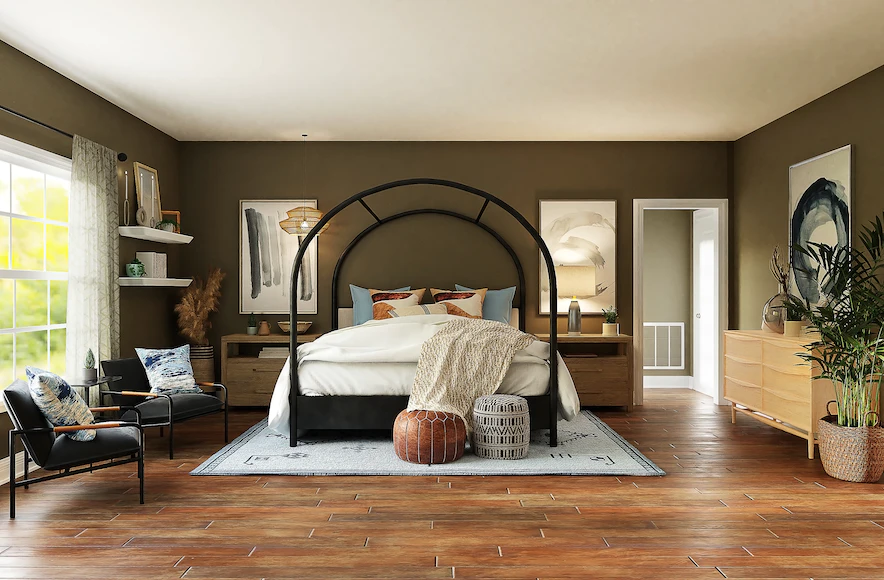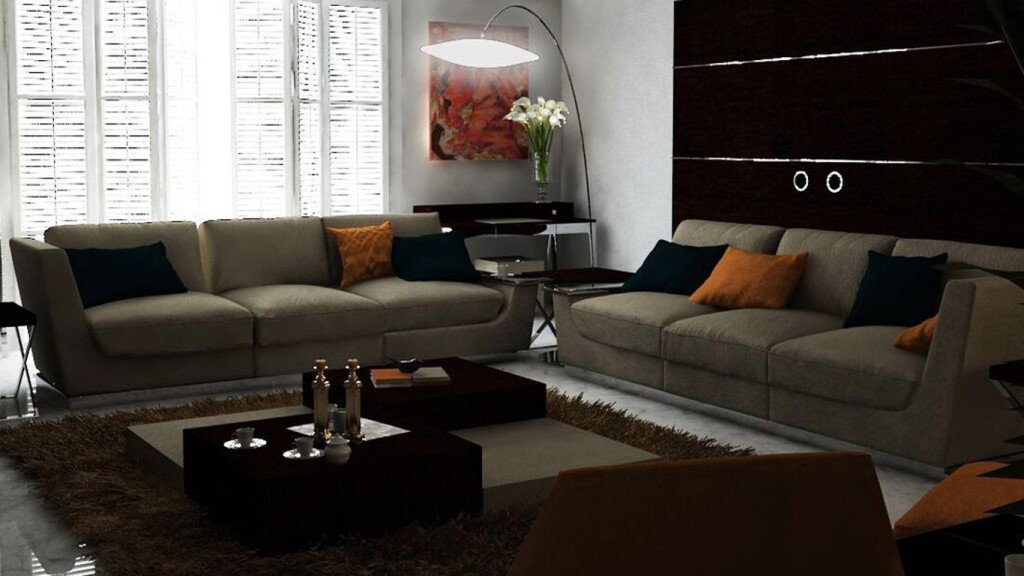6 Common Home Design Mistakes That Make You Shudder
Designing the interior of your own home can be a wonderfully rewarding endeavour, especially when the results are spectacular. But if you don’t have much experience, you may fall foul of these common home design mistakes that many people make.
Over the last years, our top designers have been privy to some somewhat disastrous DIY efforts, largely as a result of a range of commonly made and easily fixable mistakes.
Flow, layout, style, functionality, décor, colour, lighting and accessories are just some of the elements that make up a successful refurbishment project. And while you don’t necessarily have to be a professional to get things right, having a heads up on what NOT to do is always a bonus.
So let’s get your living spaces looking like they belong on the cover of a high-gloss magazine by taking a peek at our expert team’s list of six major things to avoid.
1. Incorrect use of colour

When it comes to interior design, colour is key. Yes, at the end of the day it does boil down to personal choice, but there’s a huge difference between selecting elegant hues that compliment your space and throwing together a hotchpotch of all your favourites that end up looking like you’ve taken part in a performance of Joseph and his technicoloured dream coat.
Not only does colour affect your mood, but it also has the power to make a room look bigger or smaller and can help set the intention and tone of your overall style. Red, which can increase your heart rate and make you feel hungry is therefore not an ideal choice for a child’s bedroom, for example.
Understanding the differences between harmonious, complementary and monochromatic tones is fundamental to how you pick your palette, so use a colour wheel to make sure you get it right. Here are 5 tips that will help avert a catastrophe.
- Apply the 60-30-10 principle to create balance. This means that 60% of your room reflects your base colour, 30% is in a complimentary colour and 10% is taken up with an accent colour.
- Do some research into each colour and its qualities and decide whether you want your room to look refined, quirky, trendy, vibrant or calm.
- Start with a base colour and then find two or three contrasting shades that will add an elegant, cohesive aesthetic. Avoid overdoing it and make sure you don’t go wild in every room.
- Find an accent colour that will help lift a more neutral space by introducing it in the form of a feature wall or through your curtains, rugs and accessories.
- Go monochrome by using a selection of shades and tones in the same colour throughout your décor choices. It will make your space look bigger.
Here are our best tips for how to use texture and colour to warm your home this winter.
2. Poorly placed furniture

Placing your furniture is an art and needs to create a sense of balance, flow and ease while also being functional and attractive. These are two of the biggest mistakes that occur in this area of design:
Not having a focal point
Having a key feature that draws in the eye, ties your furnishings together and helps set the style and theme of your entire ensemble is essential to any room.
Conversely, not having a specific focal point results in a disjointed, chaotic aesthetic that creates a lack of purpose and appeal.
To make your space look balanced and inviting, find a pivotal piece like a beautiful coffee table, bespoke artwork, attractive area rug or luxury sofa and build your room around it, ensuring that you settle on a specific style and colour palette to go with it.
Poor furniture placement
People often gather furniture along the way and, rather than placing it with intent, just shift things up to fit it in. This results in overcrowding, giving your room a lack of breathing space and a feeling of haphazardness. The bottom line is don’t impulse buy. Stick to your theme, purchase investment pieces and create an environment that you’re going to be happy with for years to come.
3. Clutter and lack of storage

Clutter is one of the most unattractive design mistakes imaginable and, as experts in custom cabinetry, has us quaking in our boots.
Aside from a simple lack of storage that leads to clothing draped over bedroom chairs or an overabundance of toys littered around your lounge, it can occur in ways that many of us don’t think of. Here are a few to look out for:
Overloaded counter tops: Instead of leaving lunchboxes and groceries on your kitchen counter or WFH paperwork all over your dining table, create specific storage spots that will accommodate them and then get into the habit of packing things away immediately.
Chord chaos: Living in a techno world has manifested a maze of unruly cables that many of us fail to mitigate. Find shelving that has a built in cable management system for your laptops, gaming stations and TVs and for all the rest like chargers and extension cables, invest in stylish sisal baskets or a beautiful ottoman with a storage compartment that will house them all.
Oversized furniture: A massive sofa in a tiny room is a sure-fire way to create a sense of clutter. Measure up before you invest in your main pieces, making sure that they balance out your space.
Aim to decorate your rooms without filling every inch of them, because negative space is a powerful design feature that will keep things looking clean and clutter-free.
Good storage space is prime real estate in any home and will up it’s value should you ever decide to move. So we advise that you invest in high-end built-in wardrobes as a priority, ensuring that they are designed to store all your excess clothing, shoes, bags, jewellery, accessories, linen, suitcases and laundry. It’s a spend you’ll never regret.
4. Bad lighting

Illumination is essential to any beautifully considered space and can make or break a room. Here are some of the worst lighting mistakes we’ve come across:
- Disproportionate choices: Hanging a tiny pendant light over an expansive dining table or a massive task lamp next to a small chair in a reading nook results in either insufficient or excessive luminance. Make sure that you assess your space before deciding on what you actually need.
- Using the wrong colour temperature: Putting a cool, blue light in what is supposed to be a cosy, inviting sitting room or a warm, yellow light above your kitchen workspace will change the tone of your room, making it feel uncomfortable and disjointed, so choose your bulbs carefully.
- Unwanted shadows: Bad lighting placement can result in unattractive areas of dark shadow. To avoid this, consider your room as a whole and make sure that any dark spots are lifted adequately. This is not an easy problem to solve if you have no experience, so may require the help of an expert.
- Selecting the wrong fixtures: The design of your lighting must fit in with the style of your home, so don’t rush out and buy a funky industrial installation if your space is classic and refined.
- Omitting dimmers: Dimmers enable you to turn down the brightness if you’re having a romantic dinner party or turn it up if you’re doing some late-night reading. So don’t forget about them, they’re part and parcel of a successfully designed space.
5. Lack of personality or personal touches
If you fail to infuse your home with personality, it’s going to fall into the “forgettable” category, so put your own stamp on it and avoid being bland. There’s absolutely nothing visually interesting about four white walls, a functional coffee table, a couple of “they’ll do” sofas and some insipid curtains.
That cool little rug from a trip to Cappadocia or a beautiful artwork by a local painter will make all the difference to your living room and will help your environment tell its own story.
We’re not encouraging you to collect junk, so curate your pieces carefully by taking your time and thinking about how they’ll fit in with the rest of your décor.
Make sure you fall in love with every accessory before you invest in it and feel inspired by letting your ensemble grow. If you adore gardening, add plants. If textured cushions are your passion find some real beauties, but above all strive to give your surroundings a personal touch.
6. Overdone trends
By nature, interior design is an ever-changing art, giving rise to new ideas every year. And while it’s fine to pay attention to what’s hot and happening, it’s not ok to rush out and buy every last thing in the “latest” section.
Discerning fashion aficionados will know that true style is timeless, so avoid going kitsch and overly eclectic, future proof your home and pick out pieces that will stand their ground no matter what fad comes and goes.
At the end of the day, it’s all about sustainability and infusing your space with elegance and class despite what all your friends are doing. For more info on design trends, take a look at our guide to the best and worst interior design trends this season.
In Conclusion
Putting your time and energy into creating a spectacular home is a process and, if you can manage to both think out of the box and give every decision you make due consideration, you’re sure to get it right. Simply take these mistakes into account before you start, and you have a recipe for success.
At FCI London we have a team of top designers who are passionate about décor and are at the ready seven days a week to ensure that you create a masterpiece. So pop in and see us today, we can’t wait to get started.




